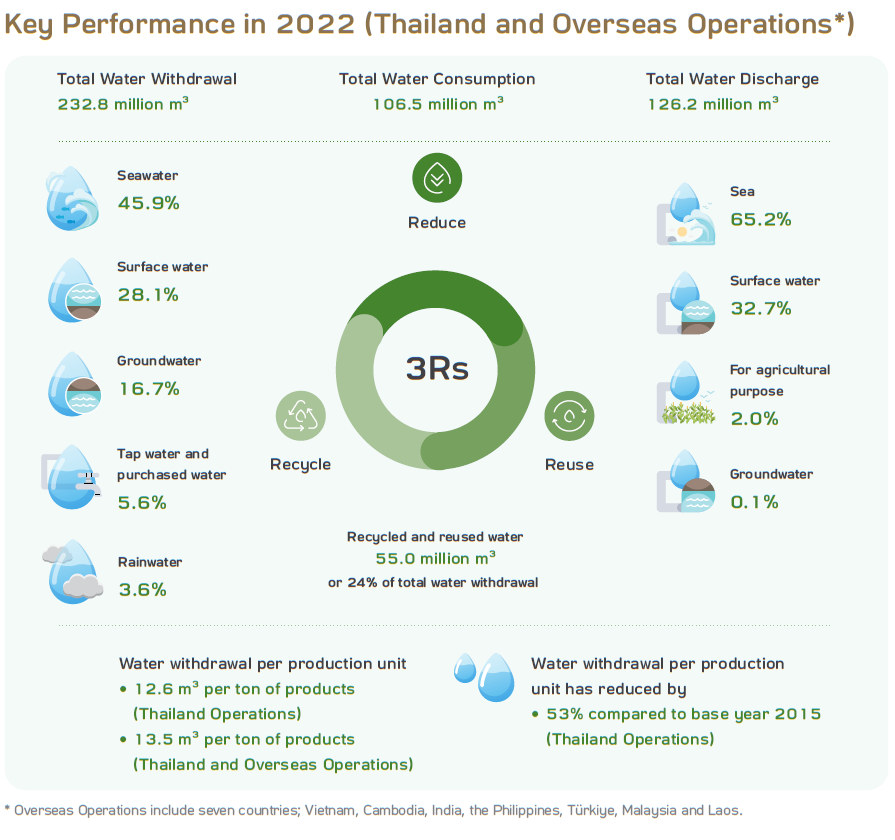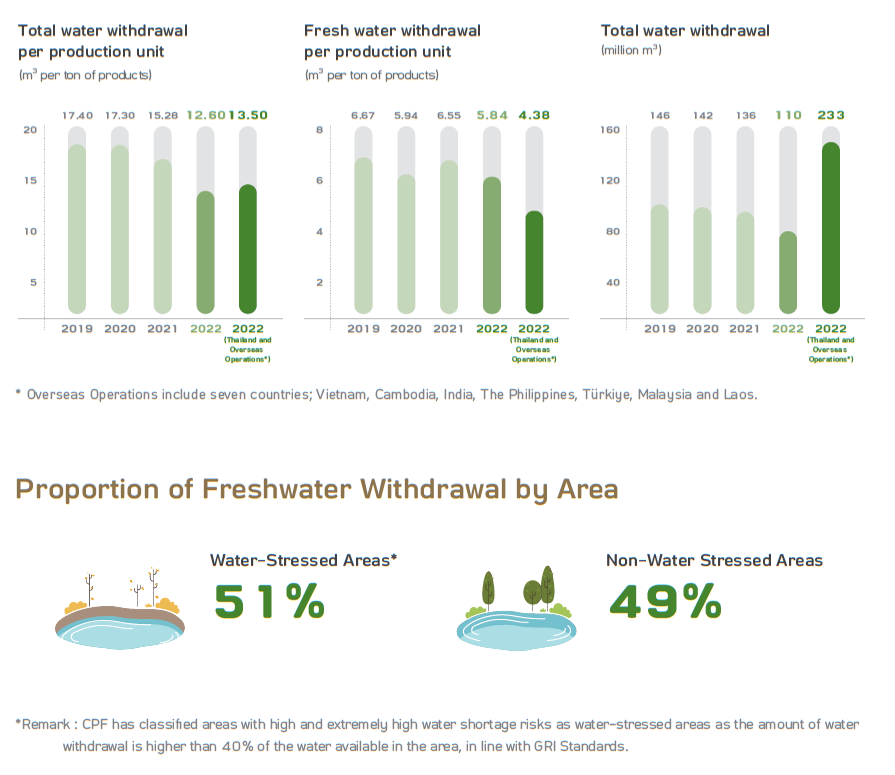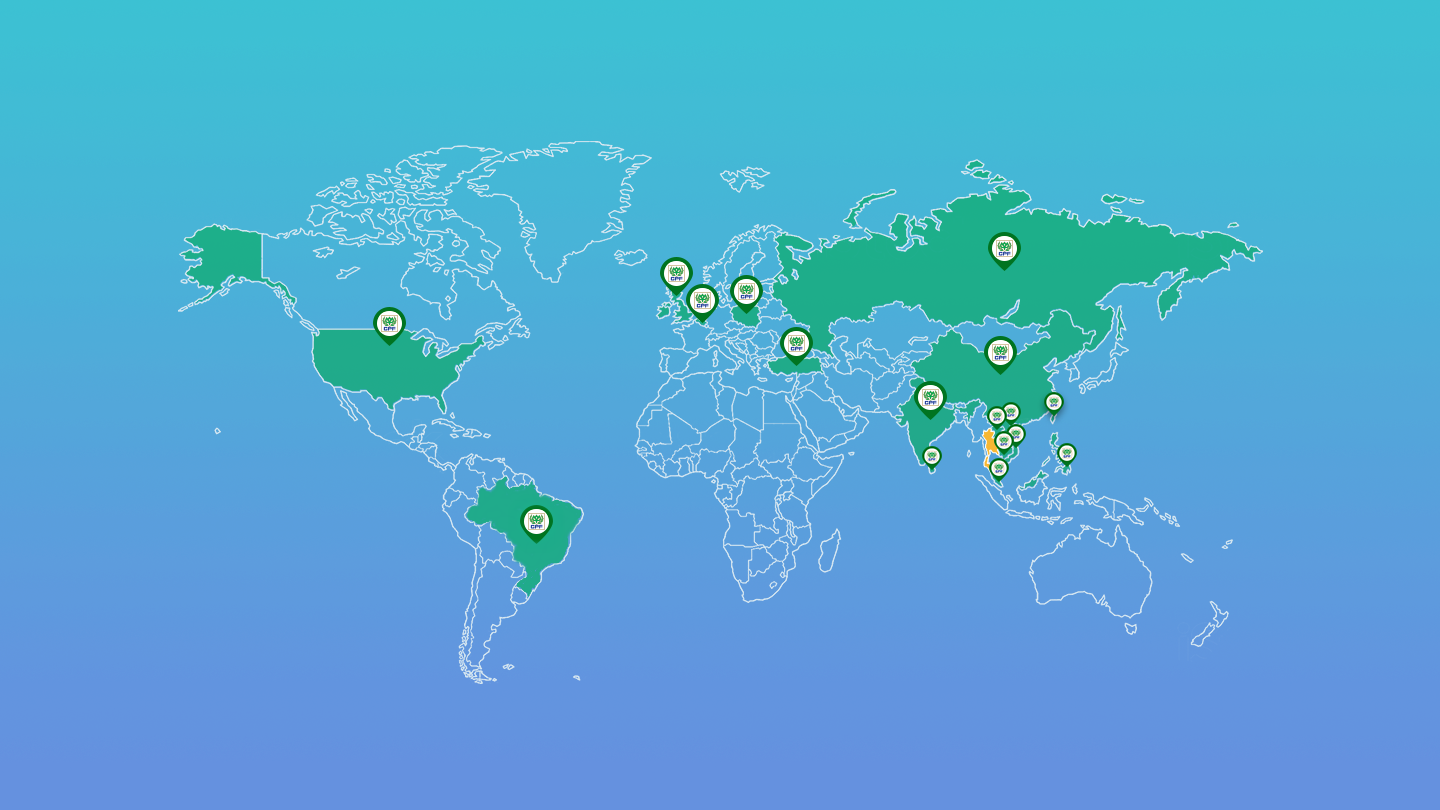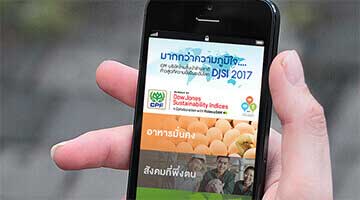Water resources are significant to the continuing operations of integrated agro-industrial and food business. Moreover, CPF is very perceptive of intensified droughts that occur frequently. We, therefore, focus on selecting locations of new business establishments on the basis of basic utility risk management which should go in tandem with water efficiency. In addition the design of production processes and machines needs to consider on the balance of production efficiency with the effectiveness of use of water resources.
CPF uses water in the production processes, for instance, water used for steam broiler in the feed business, water used for animal raising and as coolant in animal housing in the farm and processing business, water cooling systems, and tools and equipment cleaning systems in the food business, etc.
The company already sets up the CPF SHE&En Management Committee (CPF SHE&En MC), which Chief Executive Officer has been appointed by the Board of Directors as a chairman of the CPF SHE&En MC, managing the company's objectives and goals on water management aspect and overseeing business operations to ensure that business’s KPI has been specified in water usage target as one of the performance indicators in SHE&En KPIs. The company has short-term and long-term targets see details in Target 2021 and Target 2025
CPF SHE&En MC has to conduct meetings at least twice a year, to monitor progress and effectiveness in the management of safety, health, environment and energy of business units and also to consider the innovation opportunities for more effective environment and energy management. Moreover, the company has collaborated with governmental agencies and communities surrounding CPF’s operation areas to monitor on quality and quantity of major water sources to ensure that water quality is suitable for animal and marine livings to maintain the biodiversity and increase water storage for using during drought and enough for sharing with surrounding communities.
Water Risk Assessment
CPF annually assesses water risks by using database on the amount of water withdrawn for use in each unit together with the baseline water stress of watershed areas where CPF’s operations are located covering all the existing and new operations. In this regard, Aqueduct Water Risk Atlas developed by the World Resources Institute (WRI) is used as an annual water risk assessment, which enables us to prioritize context-specific water management plan at the unit level based on water risk level as follows:
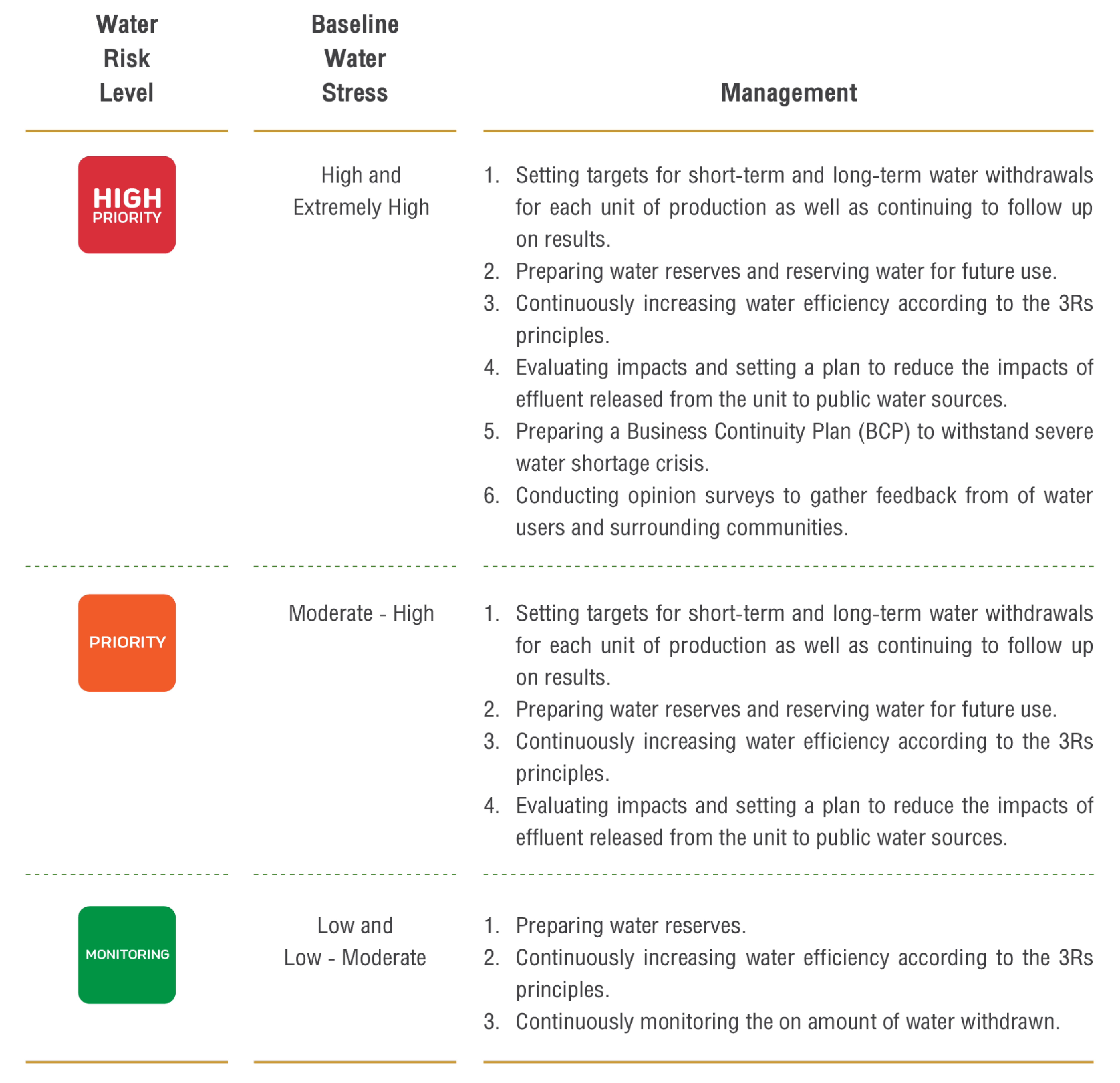
To have sustainable water management and risk mitigation for the company operations, all business units are required to conduct water management procedure to comply with SHE&En Standard, which is the standard aiming to SHE&En risk management and support environmental sustainability targets.
In addition, the company has collaborated with communities hearing their concern on water issues and provides supports CPF’s water management expert team to create awareness and knowledge to business partners in water management and water related risk plan. All of these not only help reducing risk in company and business partners’ business operations, but also reducing any impact may occur with surrounding communities during drought at present and future.
Scenario analysis and sensitivity analysis on water stress
CPF conducts scenario analysis and sensitivity analysis on water stress to understand changes in water availability in the future as a result of climate change based on WRI’s Aqueduct Water Risk Atlas under climate 3 scenarios (“Optimistic”, “Business as Usual” and “Pessimistic” which are equivalent to SSP2 RCP4.5, SSP2 RCP8.5 and SSP3 RCP8.5, respectively) in 2030 and 2040. The scenario analysis result points that most of CPF operational sites in Thailand are likely to experience either near normal or increasing level of water stress across all scenarios compared to baseline. This makes water management measures a necessity.
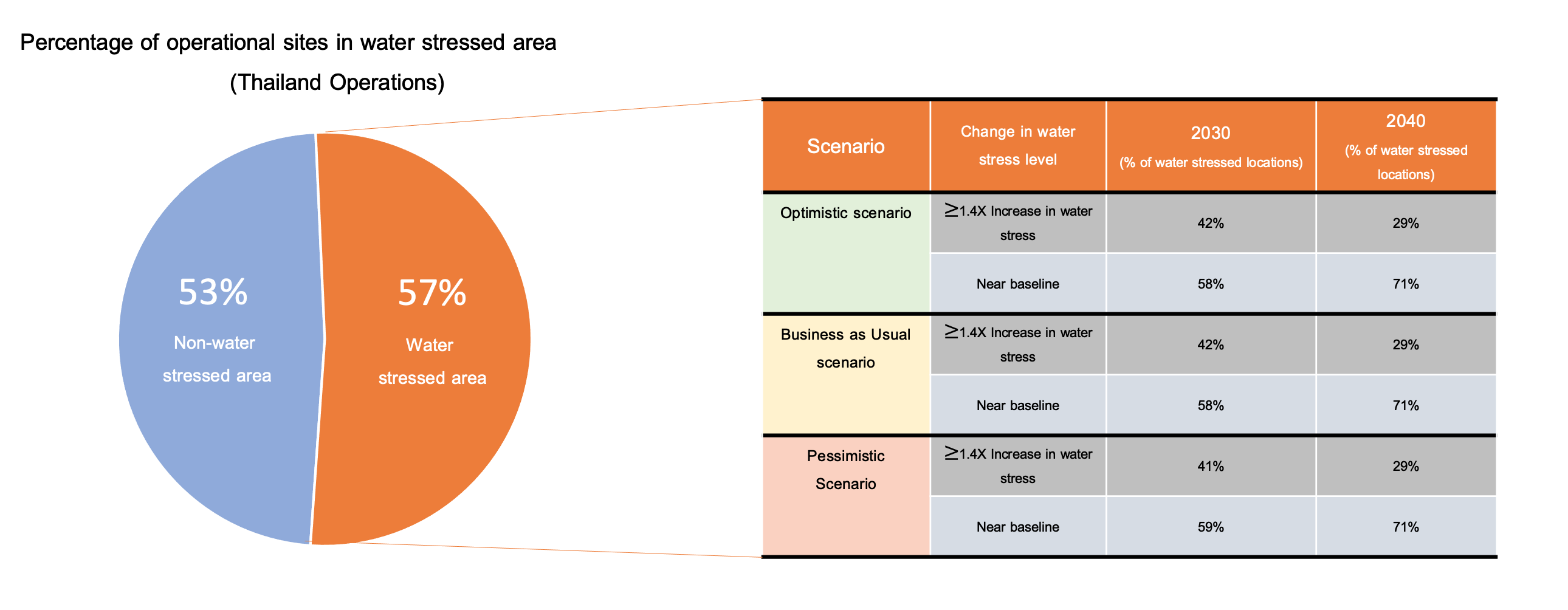
While CPF has invested in our water security through various measures including ground water drilling, water treatment plant and rain harvesting, occurrence of extreme water stress events may requires our business to purchase freshwater from alternative sources which increases our operating costs. The result from sensitivity analysis on minimum financial impact from water cost to accommodate business continuity across our water stressed locations is shown below.
|
3-Day |
1-Week |
2-Week |
3-Week |
4-Week |
|
|
Financial impact on water cost (THB million) |
15 |
34 |
69 |
103 |
138 |
Remark The number of weeks refers to the duration where water purchase from alternative sources is required to maintain business continuity across water stressed locations. The figure is estimated based on additional water cost.
Water Management within the Production Process
We emphasize appropriate water use at every process along the supply chain by managing data on water consumption for the analysis and planning of water management. We invest in research and development and utilize modern technology throughout our production process to help reduce water consumption and optimize water use, especially in our farm business which is the most water-intensive. We, therefore, have set the targets to reduce water withdrawal per production unit by 30% by 2025, compared to those in the base year 2015.
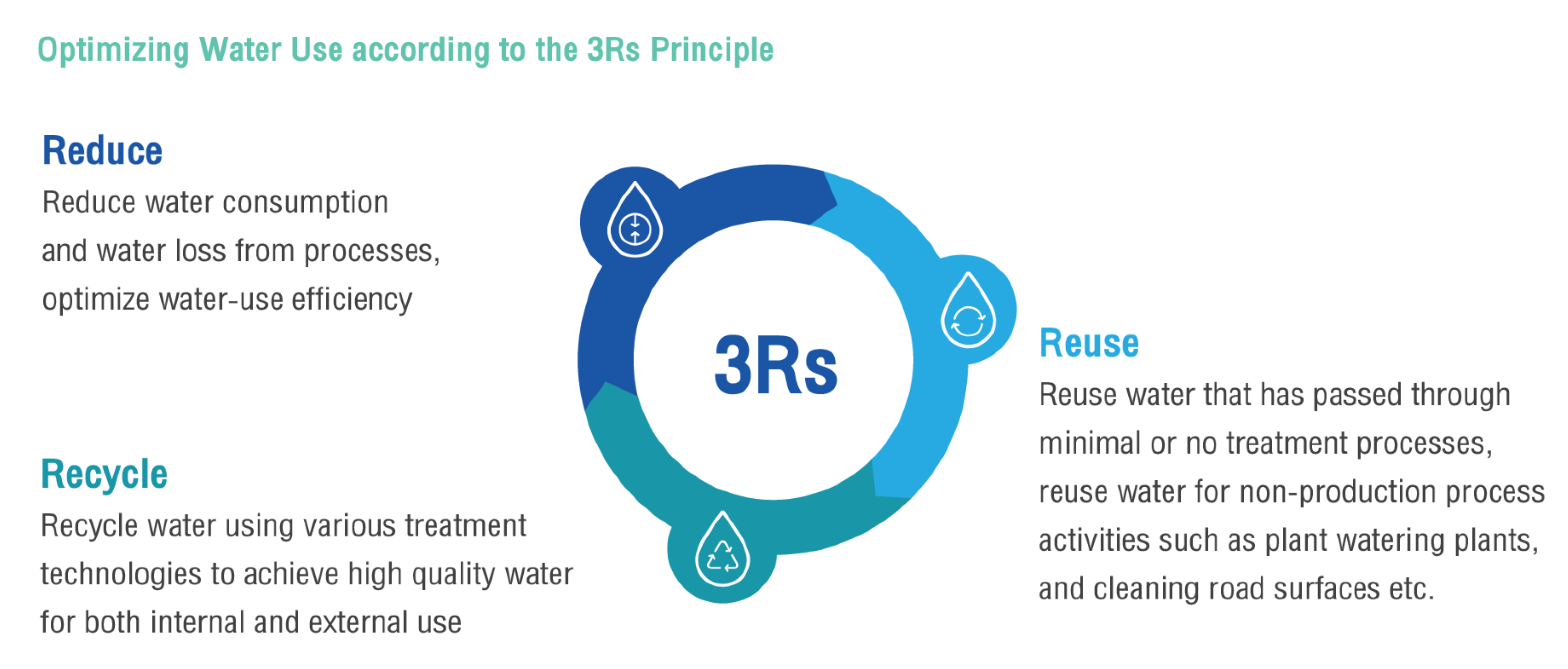
Wastewater Management
CPF strives to improve the production processes by taking into consideration optimal use of water resources and reduction of wastewater. The wastewater treatment system has been designed to circulate treated water for recycle for example using recycled water to water the plants, or to use in water cooling systems. Moreover, the quality of treated wastewater is constantly monitored and tested by CPF's laboratory registered under the Department of Industrial Works in order to maintain and improve the quality of effluent based on the standards set by the relevant laws before releasing the effluent.
